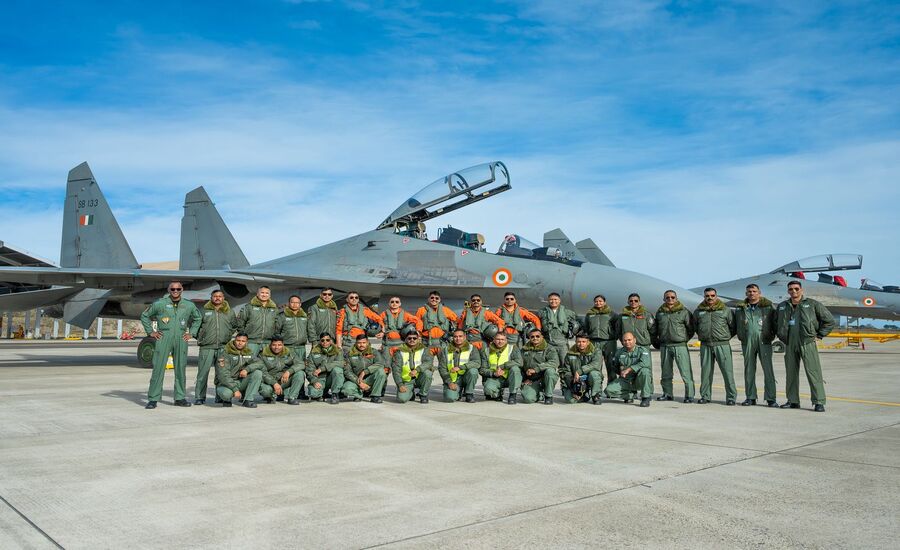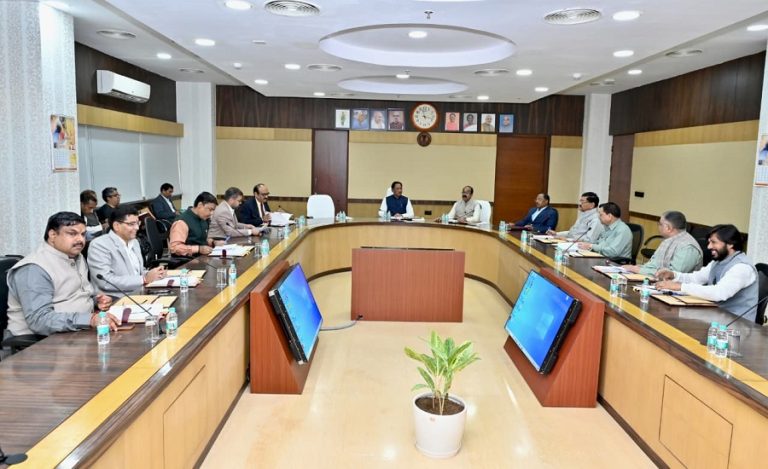The Indian Air Force (IAF) has landed a significant contingent at the Mont‑de‑Marsan Air Base in France for the much-anticipated bilateral air exercise Exercise Garuda 25, scheduled to run from November 16 to 27, 2025.
This deployment underscores India’s intent to ramp up its airborne operational synergy with the French Air and Space Force (FASF) in a challenging simulated combat environment involving the IAF’s Su-30 MKI fighters and France’s Rafale jets.
In a fast-evolving global defence scenario, the exercise sends a strong message of strategic alignment and regional readiness between New Delhi and Paris.
Background of Exercise Garuda 25
The India-France defence partnership is long-standing and multifaceted, spanning defence manufacturing, joint drills, technology transfers and strategic dialogues.
The Exercise Garuda series itself has a legacy: originally launched in 2003 between the IAF and FASF, it has evolved in scope and ambition over the years—alternating between Indian and French airspace.
Read Also: India’s Bold Sky Revolution: 100 IAF ASPJ Pods to Turn Su-30MKI into an Undetectable Super Sukhoi
With global security contours shifting rapidly, the 2025 edition arrives at a time when aerial interoperability, mission-planning agility and coalition readiness are more important than ever.
About the Deployment & Key Assets
For Exercise Garuda 25, the IAF contingent has arrived at Mont-de-Marsan Air Base in France.
Key assets include the Su-30 MKI fighters of the IAF. These will operate alongside the French Rafale fighters as part of the exercise.
The IAF flagged its participation via an official post on platform X, stating the exercise aims to place both forces in a realistic, high-intensity simulated combat environment.
Exercise #Garuda25:
— Indian Air Force (@IAF_MCC) November 13, 2025
An Indian Air Force contingent has landed at Mont-de-Marsan Air Base, France, to participate in the bilateral air exercise with the French Air and Space Force from 16–27 Nov 25.
Su-30 MKI aircraft of the IAF and Rafale fighters of the FASF will engage in a… pic.twitter.com/60PKnE8f05
Such deployments involve not only frontline aircrew but also support personnel, planners and maintainers — all focusing on refining mission-planning, execution and post-mission review.
Importance of the Exercise Garuda 25
- Exercise Garuda 25 offers both air forces a rare chance to operate under a common framework — exchanging tactics, refining air-combat manoeuvres and learning about each other’s operational doctrines.
- India and France view each other as trusted strategic partners. This exercise reinforces the defence component of that partnership and reiterates shared interest in a secure Indo-Pacific and European-Atlantic space.
- Training in a foreign base, with unfamiliar terrain, allied assets and complex scenarios forces the IAF to raise its readiness levels. The simulated combat environment will test mission adaptability, pilot endurance and logistical robustness.
- Beyond the tactical dimension, Exercise Garuda 25 sends a diplomatic signal — India’s air power is globally engaged, and its cooperation with advanced air forces like the FASF demonstrates its intent to rise as a credible partner in international security.
Challenges Ahead
- Operating far from home bases brings challenges in supply-chains, spares, maintenance and interoperability of support systems.
- Indian and French doctrines, communication procedures and command systems may differ — aligning them takes time and rigorous training.
- High-intensity simulated combat raises risk levels; ensuring safety while maintaining realism is a fine balance.
- Exercising operations is one thing; converting lessons into concrete upgrades of tactics, systems and training back home is another tasked challenge.
Key Implications
For India’s Air Force: The IAF will gain valuable exposure to Western combat methodologies and air base operations on foreign soil — feeding into its doctrinal evolution and pilot training modules.
For India-France Collaboration: The success of Garuda 25 may pave the way for deeper aerospace cooperation, joint development programmes, technology sharing and wider tri-service engagements.
For Regional Security: A stronger India-France air nexus contributes to stability in the Indo-Pacific, Indian Ocean Region and confirms India’s willingness to partner beyond its immediate neighbourhood.
For Defence Diplomacy: The demonstration of credible air power partnerships aids India’s standing in global defence forums and may influence future alignments and coalition frameworks.
Way Forward
- Post-exercise, a detailed debrief should capture lessons learned, identify gaps in tactics and logistics, and feed into syllabus updates for the IAF.
- India should explore expanding such bilateral drills into multilateral formats, leveraging the momentum built by Garuda 25.
- Technology-sharing frameworks with France — particularly in UAVs, sensors, air-to-air munitions — should be actively leveraged to convert training gains into capability enhancements.
- Are pilot readiness levels improving? Are new tactics being institutionalised? Are maintenance & support processes being upgraded?
- Sharing visuals, after-action interviews and success metrics will help in reinforcing the strategic message of the exercise to domestic and international audiences.



























